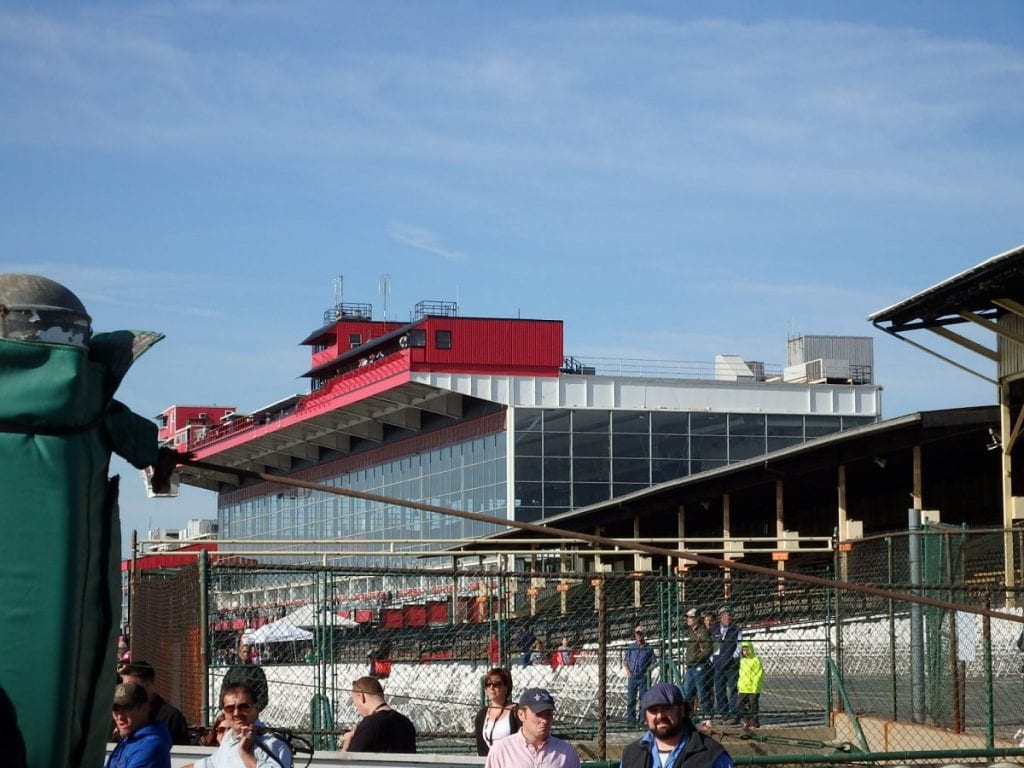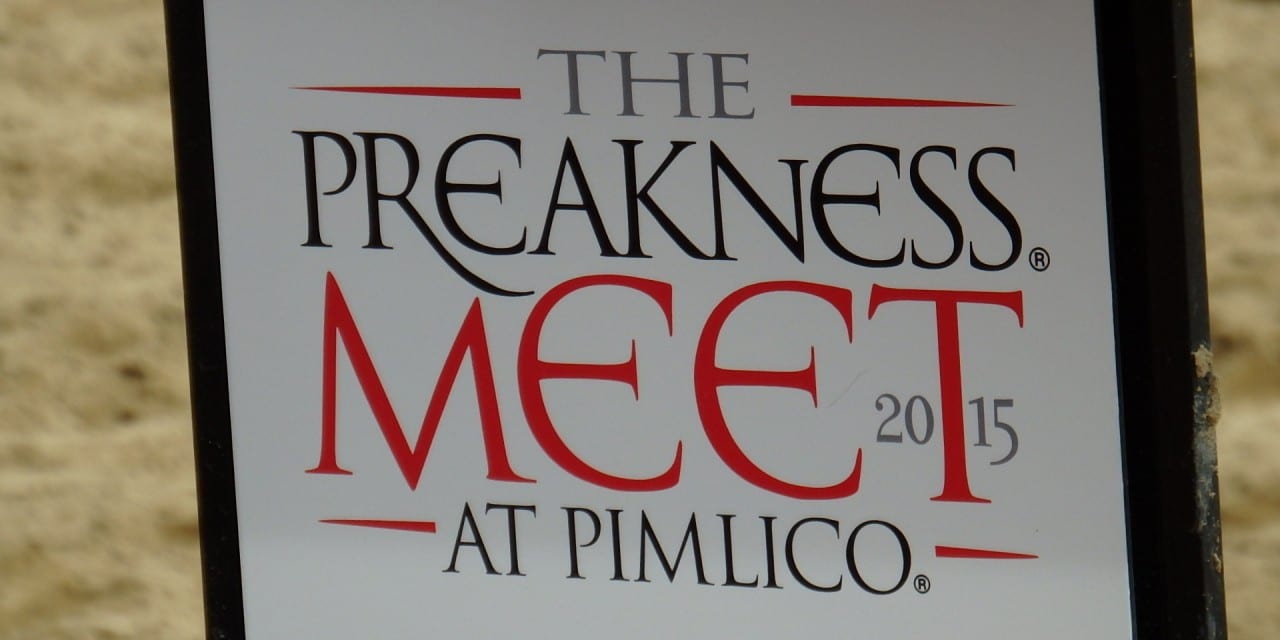
The status of Pimlico — and how that’s handled — is one challenge facing Maryland racing. Photo by The Racing Biz.
by Frank Vespe
The Maryland Jockey Club’s announcement yesterday that handle during the Pimlico spring meet rose sharply compared with last year was no surprise to anyone who’d been watching the numbers over the last two months.
All-sources handle rose some 25 percent, to more than $207 million, according to the MJC.
That increase was underlined Saturday, when bettors pumped more than $4.7 million through the windows, according to Equibase charts. That was 80 percent higher than the wagering on closing day 2014 under substantially similar conditions: closing day at Pimlico, a local card that was fairly bland, a Triple Crown in the offing at Belmont.
Thus concluded one of the odder Pimlico meets in recent years, where even the bad news ended up as good news.
Civil unrest in Baltimore a couple of weeks before the Preakness led some to suggest the race should be moved or postponed. And then record crowds came out for both Black-Eyed Susan day and Preakness day.
The MJC itself floated the possibility of closing Pimlico and moving future runnings of the Preakness to Laurel Park (imagine those traffic jams), generating angst for many Baltimore politicians.
And on Preakness day itself, water pressure issues caused the closure of several restrooms in the old facility. That’s the sort of thing that’s led to plenty of public flogging of the Maryland Jockey Club in recent years, but at a state Racing Commission meeting three days after the Preakness — an event two different people called “a lovefest” — commissioners congratulated Tim Ritvo, chief operating officer of the MJC’s parent company the Stronach Group, on what one called an “almost flawless” day.
Which leads to an obvious question: what’s going on here?
Physics teaches us that bodies in motion tend to remain so, and that’s a lesson Ritvo’s clearly taken to heart. He and MJC general manager Sal Sinatra have done a good job of turning their accomplishments into a sense of momentum, and that momentum has yielded a steady drumbeat of positive coverage. They’ve combined critical, behind-the-scenes work — for example, completing the first of the long-promised, much-delayed barns at Laurel — that horsemen love but don’t much matter to the public with relatively minor but high-visibility improvements the public enjoys (the flat-screen televisions, for example, or the improved Sports Palace at Pimlico).
They added new wagers for the Pimlico meet in the Pick 5 and Rainbow 6, and while neither was a home run, both offered benefits to the track. The former, with a low 12 percent takeout, demonstrated the track’s commitment to becoming more competitive on takeout and gave serious players a reason to flip to the Pimlico page of the program. The latter, generally dismissed by serious players as a sucker bet, carried over to closing day, and with $300,000 in the pool and a mandatory payout, generated nearly $800,000 in new wagering.
Ritvo has also said that, with the Stronach Group’s corporate focus now squarely on Maryland, the company has taken steps to bolster national awareness of the Maryland product: getting it more television visibility and encouraging players at other Stronach properties to look at Maryland chief among them.
Of course, some of the what’s going on is good fortune. The rains that washed away turf racing on Black-Eyed Susan day in 2014 — costing the track millions in handle — generally skirted Baltimore this spring, with the track not having to move any grass races onto the main track until the last week of the meet. New York’s racing product has been widely derided as less than stellar this spring, too, and short fields in the Empire State create opportunities elsewhere.
But the larger story is what Ritvo himself has said about improving the Maryland business.
“It’s a grind,” he said in a February interview. “There’s no silver bullets, and everything has to be done in a sequence.”
By setting out that sequence, and then checking off the boxes going forward, he’s allowed people to see, and sense, the progress, and that’s created a kind of virtuous cycle for the company.
Which isn’t to say there aren’t challenges ahead.
The company’s decision to run in July, pending Commission approval, makes sense — it keeps the momentum going and allows the MJC to use Laurel’s outstanding turf course — but also carries risks. With every mid-Atlantic track running, as well, later in the month, as Saratoga and Del Mar, will there be sufficient wagering dollars to go around?
An even bigger, and riskier, matter is the future of Pimlico. The Pimlico issue is a question with both financial and political dimensions, and an industry currently receiving tens of millions of dollars in government subsidies (in the form of slot machine revenues) can’t afford to mishandle the political aspect.
Still, it’s clear that the strategy of breaking what seemed to be a big intransigent problem into its component parts and tackling them one-by-one is making a difference. Handle grew during both the Laurel winter and Pimlico spring meets, and more facilities improvements are in the offing. People in and out of Maryland perceive the state’s Thoroughbred industry to be on the rise.
When Sal Sinatra claims, “We believe this is only the start,” it doesn’t feel like hyperbole.
Unless, perhaps, you were one of the folks looking for a working bathroom on Preakness day.







